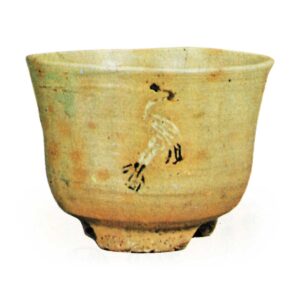
From the Azuchi-Momoyama period to the early Edo period, tea bowls and other items that were made to order and fired in Korea as samples from Japan. In the article on Koryo ware in the Manpo-Zensho, “Gohonte Rikyu Oribe Hon,” it is written, “Gohonte Rikyu Oribe Hon is a tea bowl, bowl, plate, incense burner, and ten thousand other utensils are all white in color,” “Kisai Gohonte drinking cup is thin,” “Genetsu Gohonte Gomurocha ‘bowl’ is a copy. The following are some of the pieces on the right: “Shigesan’s handmade bowls and cups are variously decorated. Although the details of Kisai Gohonte are not known, Genetsu and Shigezo were potters from Tsushima, who were engaged in pottery production at Busan kilns in Korea from Kanbun (1666-1173) to Jokyo (1684-8), as shown in an old record of Tsushima. In addition to Oribe Gohon and Enshu Gohon, there is also a type called Suna Gohon, depending on its clay flavor. There are also various types of pottery with different patterns, such as standing cranes, plum pots, and hollyhock motifs. Generally, white clay is glazed with a reddish-yellow ratty glaze, and often has a painted pattern of white glaze, iron, or gosu. It is said that the painting of the standing crane is a draft of Shogun Iemitsu, and according to a legend from Tsushima, Kano Tsunenobu became a painter and went to the kiln during the Tenwa period (1681-14). The clay of Gomoto is dotted with light reddish tints like red plum blossoms, and this reddish tint is especially appreciated as it enhances the green color of the tea.



